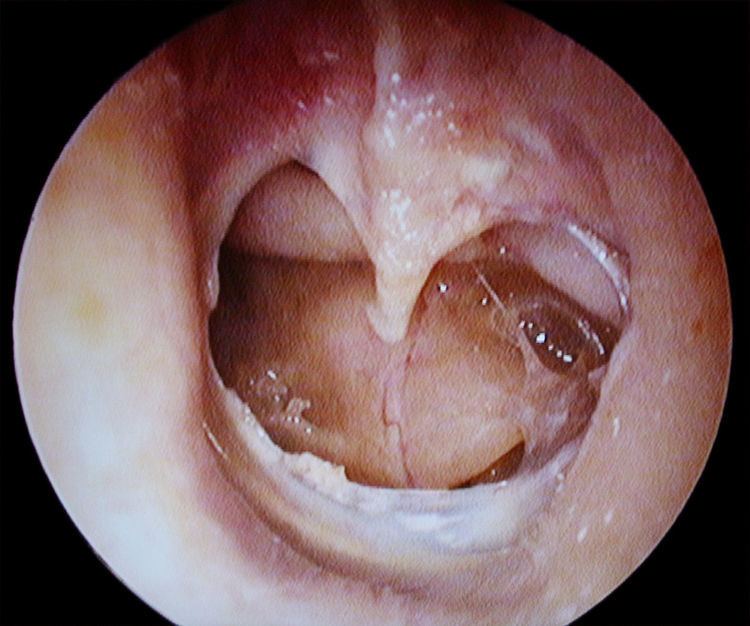ICD-10 H72, S09.2 DiseasesDB 13473 eMedicine ent/206 | ICD-9-CM 384.2 MedlinePlus 001038 MeSH C09.218.903 | |
 | ||
A perforated eardrum or punctured eardrum is a rupture or perforation (hole) of the eardrum which can occur as a result of otitis media (ear infection), trauma (e.g. by trying to clean the ear with sharp instruments), explosion, loud noise or surgery (accidental creation of a rupture). Flying with a severe cold can also cause perforation due to changes in air pressure and blocked eustachian tubes resulting from the cold. This is especially true on landing.
Perforation of the eardrum leads to conductive hearing loss, which is usually temporary. Other symptoms may include tinnitus, earache or a discharge of mucus.
Treatment
The perforation may heal in a few weeks, or may take up to a few months. Some perforations require intervention. This may take the form of a paper patch to promote healing (a simple procedure by an ear, nose and throat specialist), or surgery (tympanoplasty). However, in some cases, the perforation can last several years and will be unable to heal naturally. Such cases are usually a result of a perforation being surgically induced during an operation involving the ear.
Hearing is usually recovered fully, but chronic infection over a long period may lead to permanent hearing loss. Those with more severe ruptures may need to wear an ear plug to prevent water contact with the ear drum.
